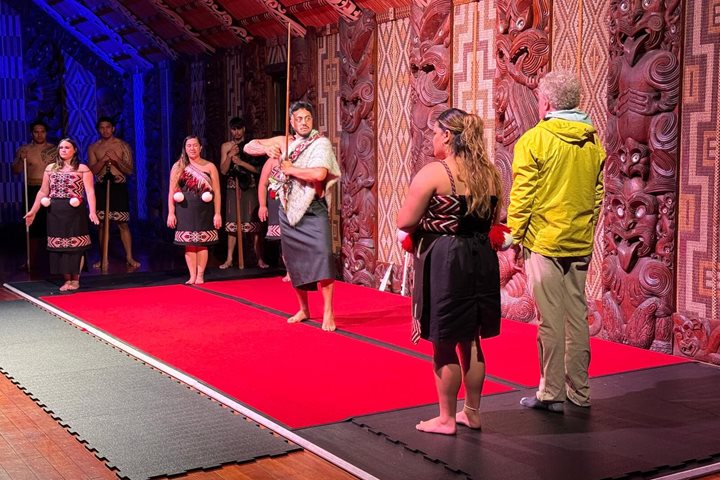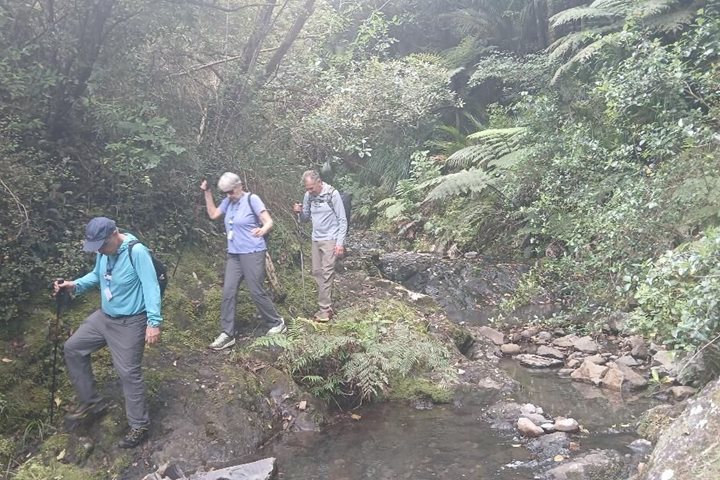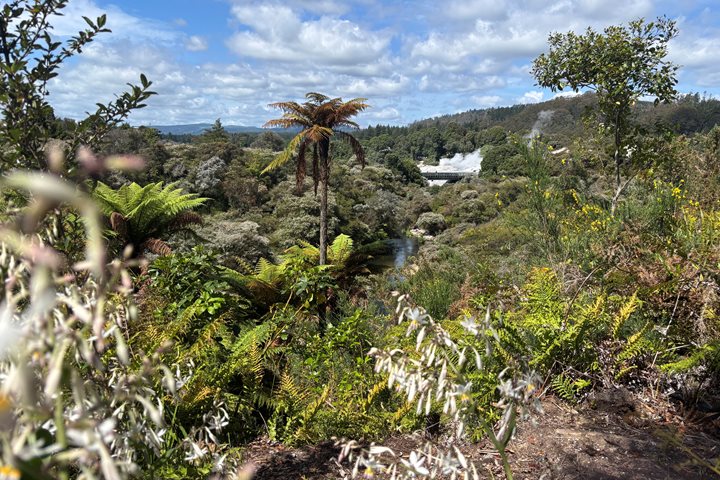Among many qualities, Gisborne is known for its fantastic weather and wonderful wines. It is also famous for its proximity to the International Date Line. It is the first city on the planet to receive the sunrise each day.
We had lots of opportunities for activities today. Some guests visited a family-owned, working sheep ranch at Waipura Station to observe sheep shearing and sample world class wines at the family-owned Bushmere Winery. Others toured the world-renowned collection of 3,500 species of trees at Eastwoodhill Arboretum and the unique experience of sailing on the traditional Māori Pāhi canoe named Tairāwhiti. What a perfect day on the North Island of New Zealand.







